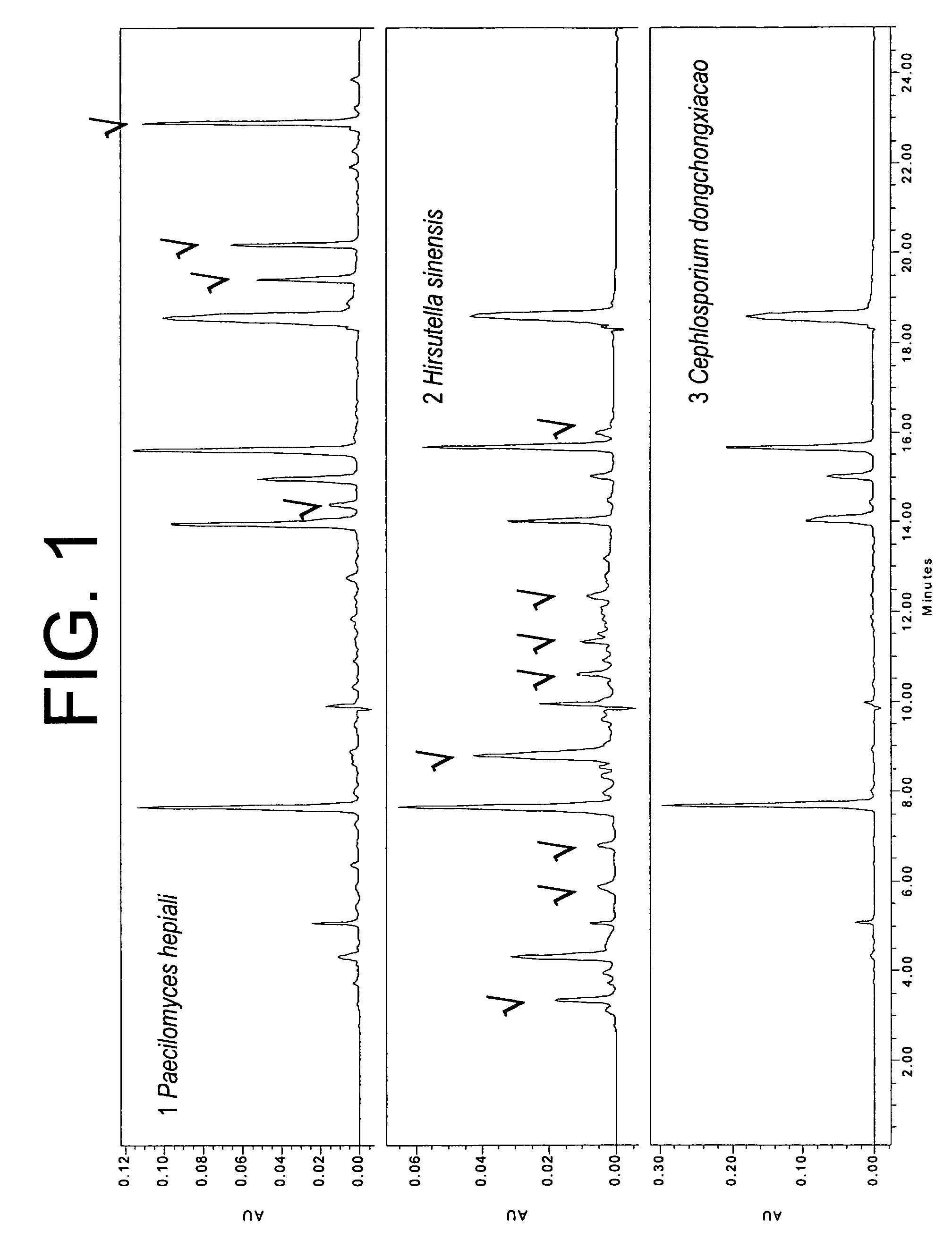Fungal-derived formulations and associated methods
a technology of formulations and fungi, applied in the field of fungi, can solve the problems of increasing the cost of research and development, increasing the difficulty of obtaining the correctness of reports,
- Summary
- Abstract
- Description
- Claims
- Application Information
AI Technical Summary
Benefits of technology
Problems solved by technology
Method used
Image
Examples
example
[0050]Samples of c. sinensis, p. hepiali, and h. sinensis were analyzed and identified utilizing a high-performance liquid chromatograph (HPLC) system. The apparatus utilized was a HP 1100 having C8 column, 5μ, and 15 cm long. A hot plate, 25 ml flask, 50 ml flask, HPLC grade water and HPLC acetonitrile were also used in the operation of the process.
[0051]A 300 mg sample of fungus was mixed with 20 ml of purified water in a 50 ml flask. The mixture was boiled and refluxed for 15 minutes on the hot plate. The sample was cooled to room temperature and filtered. Water was subsequently added to bring the supernatant of the sample to a total volume of 50 ml.
[0052]The chromatography conditions were set to a column temperature of 18° C. and a detection wavelength of 230 nm. A chart describing the gradient is provided
[0053](1) Gradient:
[0054]
TimeFlowA %B %(min)(ml / min)(CH3CN)(Water)10.01.059525.01.04060318.01.06040422.01.09010524.51.09010625.01.0595
[0055]Post elution times of 10 minutes in ...
PUM
| Property | Measurement | Unit |
|---|---|---|
| temperature | aaaaa | aaaaa |
| temperature | aaaaa | aaaaa |
| temperatures | aaaaa | aaaaa |
Abstract
Description
Claims
Application Information
 Login to View More
Login to View More - R&D
- Intellectual Property
- Life Sciences
- Materials
- Tech Scout
- Unparalleled Data Quality
- Higher Quality Content
- 60% Fewer Hallucinations
Browse by: Latest US Patents, China's latest patents, Technical Efficacy Thesaurus, Application Domain, Technology Topic, Popular Technical Reports.
© 2025 PatSnap. All rights reserved.Legal|Privacy policy|Modern Slavery Act Transparency Statement|Sitemap|About US| Contact US: help@patsnap.com

